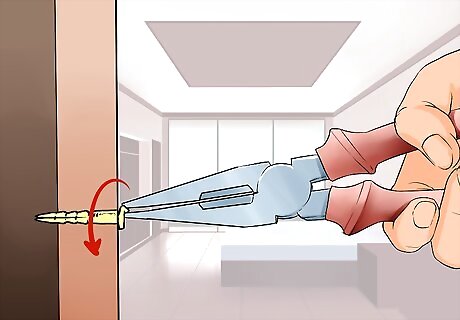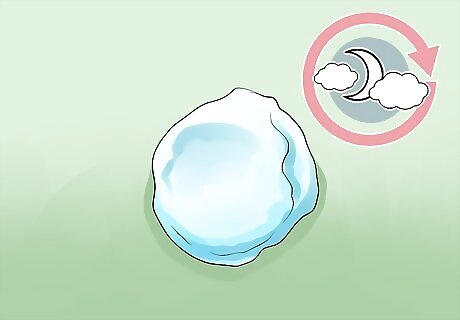
views
Pulling the Collar Out with Pliers

Unscrew the threaded screw. Some anchors have threaded screws that need to be removed before you can reach the collar. In these cases, use a screwdriver to turn the screw counterclockwise until it is loose, and then remove it. If the screw has a cross slot on top, remove it with a Phillips-head screwdriver. This is the most common type of screw used in drywall anchors.

Grab the collar with a set of needle-nosed pliers. Use needle-nosed pliers to get underneath the anchor and grip it. Grab the edge of the collar, then pull out and snap it off. The collar is a small circular piece of metal that holds the anchor in place, so that it cannot be pushed backward, out the other end of the wall. Be gentle when you attach the pliers. You don’t want to gouge the drywall. Try to avoid touching the drywall with the pliers. If the anchor is tight or stuck, place a flat-head screwdriver or pry bar under the head of the anchor to ease it out.

Press the tip of a screwdriver into the hole where the wall anchor is lodged. Once the anchor has been removed, you can use a screwdriver to push the anchor out through the other end of the wall. The screwdriver shouldn’t be larger than the diameter of the wall anchor because you will want to be able to push it through the wall without making the hole bigger. You can also use a ⁄4 in (0.64 cm) drill bit to drill out the insert.

Push the anchor through the wall with a screwdriver. The wall anchor should fall into the frame, behind the drywall. You will be left with a small hole to patch. Another option is to place a Phillips-head screwdriver in the anchor. Tap it gently with a hammer. Once it is pushed slightly into the wall, apply joint compound over it to smooth out the hole.
Cutting the Collar Out

Push a single utility razor blade under the collar. The blade should be sharp and flush with the wall, with the blade facing down. Do not push the blade toward the wall, or you could damage the surface of the drywall. This method works well on plastic anchors, not metal ones.

Saw the collar off the anchor. Rock the razor blade back and forth, to slowly cut through collar. Once the collar breaks off, discard it.

Push the anchor through the wall with a screw driver. Once the collar has been removed, you should be able to push the anchor through the wall without damaging it. Press a screwdriver into the hole where the anchor is held. It should fall out on the other side of the wall. Once the hole is clear you can proceed to patch it up, so no one will ever be able to know the anchor was there.
Patching the Drywall

Apply drywall compound with a plastic putty knife. Apply drywall compound to a putty knife and wipe it back and forth over the hole. Stop when the hole is completely filled with putty. Using an “x” motion when you apply the putty will help get a smooth and even surface. If the hole is larger than ⁄2 in (1.3 cm), cover it first with self-adhesive drywall mesh tape, which you can buy at a hardware store. Apply the compound over this tape.

Wipe off the excess drywall compound with the putty knife. Once the hole is completely full, smooth out the putty. Wipe off excess putty until it is flush with the wall.

Allow the drywall putty to dry. Follow the direction on the package. Typically, you will need to let the putty to sit overnight.

Sand the surface of the putty. Use medium-grade sandpaper to lightly sand the hole, removing excess putty. Stop when the surface is smooth. Wipe up the dust after you finish.

Apply paint to the hole. Use light, feathery strokes so that the paint blends in well with the rest of the wall. To mask the area where the anchor had been, apply wall paper of the same shade as the rest of the wall. Allow it to dry overnight.
















Comments
0 comment